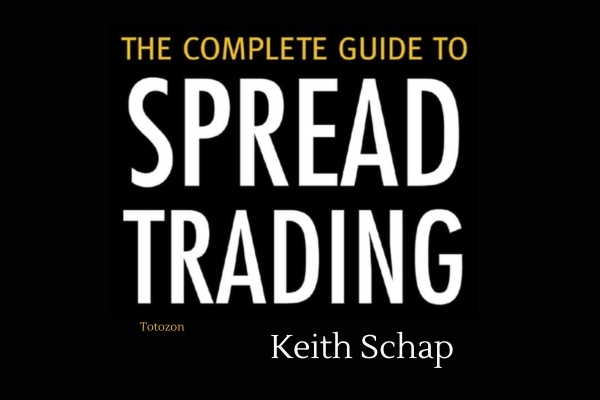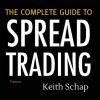The Complete Guide to Spread Trading
$6.00
File Size: Coming soon!
Delivery Time: 1–12 hours
Media Type: Online Course
The Complete Guide to Spread Trading
Introduction
Spread trading is an advanced trading strategy that involves simultaneously buying and selling two related financial instruments. This method can provide traders with opportunities to profit from the price differences between these instruments. In this comprehensive guide, we will explore the various aspects of spread trading, including its types, benefits, and strategies to help you become proficient in this trading approach.
Understanding Spread Trading
What is Spread Trading?
Spread trading involves taking two opposing positions in related securities, commodities, or other financial instruments. The goal is to profit from the relative price movements between the two positions.
How Does Spread Trading Work?
In a typical spread trade, you might buy one asset while selling another. For example, you could go long on crude oil futures while shorting heating oil futures. The profit comes from the change in the price difference between the two positions.
Types of Spread Trading
- Intermarket Spreads: Trading different but related markets, such as crude oil and natural gas.
- Intramarket Spreads: Trading different contracts within the same market, like two different months of crude oil futures.
- Intercommodity Spreads: Trading related commodities, such as wheat and corn.
- Option Spreads: Combining different options strategies, like a bull call spread or bear put spread.
Benefits of Spread Trading
Risk Reduction
Spread trading can reduce risk because the opposing positions in related instruments can offset each other’s price movements.
Lower Volatility
Spreads often exhibit lower volatility compared to outright positions, making them less risky.
Margin Efficiency
Brokers usually require lower margins for spread trades than for outright positions due to the reduced risk.
Getting Started with Spread Trading
Choosing a Market
Select markets that you are familiar with and understand their dynamics. Popular markets for spread trading include commodities, futures, and options.
Analyzing Market Relationships
Understand the relationship between the instruments you plan to trade. Historical price data and correlation analysis can help identify potential spread trading opportunities.
Setting Up a Trading Plan
Develop a trading plan that includes entry and exit strategies, risk management, and regular performance review.
Popular Spread Trading Strategies
Calendar Spreads
Involves buying and selling futures contracts of the same commodity with different expiration dates. For example, buying a December crude oil contract and selling a June crude oil contract.
Intercommodity Spreads
This strategy involves trading related commodities. An example is buying wheat futures while selling corn futures, based on their price relationship.
Options Spreads
Options spreads involve combining two or more options positions. Common types include:
- Vertical Spreads: Buying and selling options of the same type and expiration but different strike prices.
- Horizontal Spreads: Buying and selling options of the same type and strike price but different expiration dates.
- Diagonal Spreads: Combining vertical and horizontal spread characteristics.
Relative Value Spreads
Focuses on the relative value between two instruments, such as two different stocks within the same sector.
Technical Analysis for Spread Trading
Chart Patterns
Utilize chart patterns to identify potential spread trading opportunities. Patterns like head and shoulders, double tops, and bottoms can be useful.
Moving Averages
Moving averages can help identify trends and reversals in the spread between two instruments.
Indicators and Oscillators
Indicators like RSI, MACD, and Bollinger Bands can provide additional insights into potential spread trades.
Risk Management in Spread Trading
Setting Stop-Loss Orders
Protect your positions by setting stop-loss orders. This limits your losses if the market moves against your spread trade.
Diversifying Spreads
Spread your risk by trading multiple spreads across different markets and instruments.
Regular Monitoring
Monitor your positions regularly to ensure they are performing as expected and adjust your strategy as needed.
Advanced Spread Trading Techniques
Statistical Arbitrage
Statistical arbitrage involves using mathematical models to identify and exploit pricing inefficiencies between related instruments.
Algorithmic Spread Trading
Utilize algorithmic trading strategies to automate your spread trades, ensuring quick and efficient execution.
Hedging with Spread Trading
Use spread trading as a hedging tool to protect against adverse price movements in your portfolio.
Conclusion
Spread trading offers a versatile and effective way to profit from market movements while mitigating risk. By understanding the different types of spreads, employing robust trading strategies, and practicing sound risk management, you can become a successful spread trader. Whether you’re trading commodities, futures, or options, spread trading can enhance your trading toolkit and improve your overall market performance.

FAQs
1. What is the main advantage of spread trading?
The main advantage is risk reduction, as opposing positions in related instruments can offset each other’s price movements.
2. How do I choose the right market for spread trading?
Select markets you are familiar with and understand their dynamics. Analyze historical price data and correlations to identify opportunities.
3. What are some common spread trading strategies?
Common strategies include calendar spreads, intercommodity spreads, options spreads, and relative value spreads.
4. How can I manage risk in spread trading?
Manage risk by setting stop-loss orders, diversifying your spreads, and regularly monitoring your positions.
5. Can spread trading be automated?
Yes, algorithmic spread trading can automate the execution of spread trades, ensuring quick and efficient transactions.
Be the first to review “The Complete Guide to Spread Trading” Cancel reply
You must be logged in to post a review.
Related products
Forex Trading
The Complete Guide to Multiple Time Frame Analysis & Reading Price Action with Aiman Almansoori
Forex Trading
Forex Trading
Forex Trading
Forex Trading
Forex Trading
Forex Trading
Forex Trading
Forex Trading
Forex Trading
Forex Trading

 Scalp Strategy and Flipping Small Accounts with Opes Trading Group
Scalp Strategy and Flipping Small Accounts with Opes Trading Group 



















Reviews
There are no reviews yet.